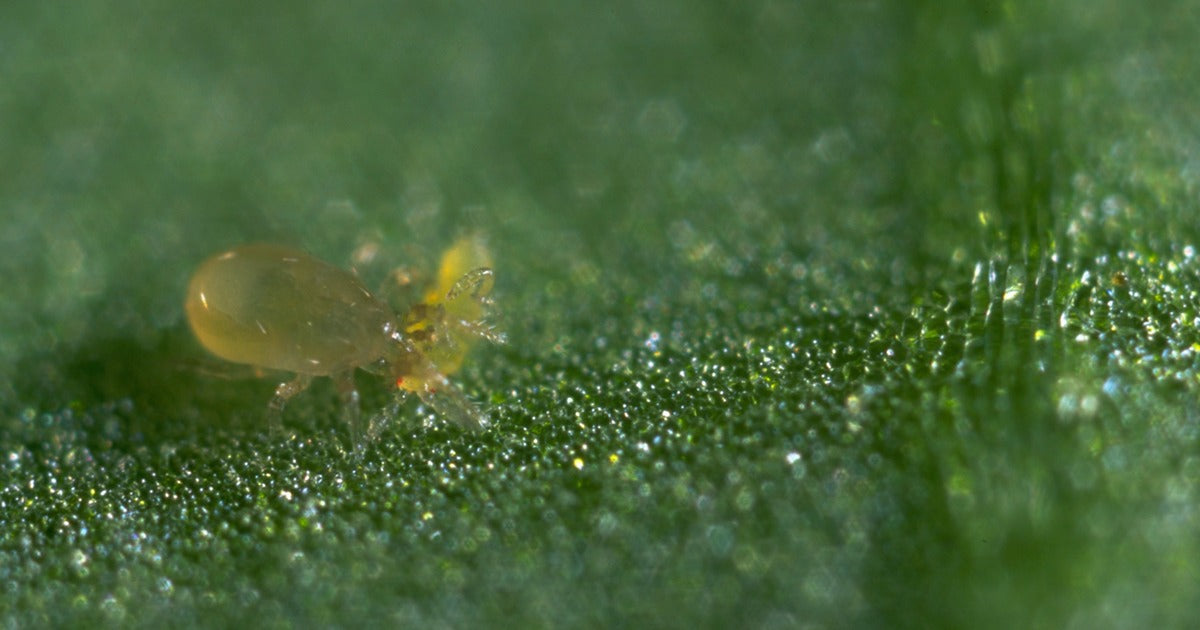
Thrips Have Become A Serious Plant Pest
Thrips have steadfastly become a serious pest of house plants, plants grown in glasshouses, and of indoor heated cultivation. The most common and harmful species is the Western Flower Thrip (Frankliniella occidentalis). This Thrip does not go into diapause in the winter and will continue reproducing if temperatures are high enough. Thrips will also develop quicker on flowering plants, as they can feed on pollen. Thrip adults are very small and pencil shaped.
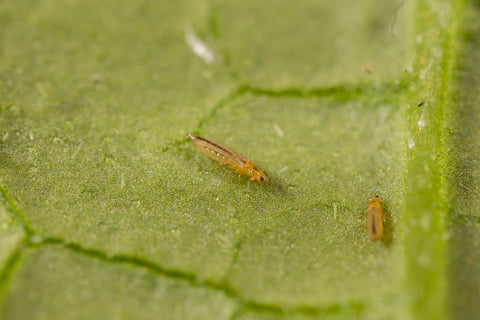
A Western Flower Thrip can be identified by its small size and pencil shape.
The Thrip life cycle develops through six stages: egg, two larval, pre-pupa, pupa and the adult.

The Thrip life cycle includes two 'Young larva' phases, a 1st Instar & 2nd Instar, totalling 6 life cycle stages.
Typical Thrip Damage Symptoms
Thrips cause damage by piercing the surface of leaves and flowers, sucking out the contents and causing the surrounding tissue to die. This results in the development of silver grey mottled areas on leaves, and white distortions on flowers. Growth of the damaged plants is reduced, and leaves and fruit can shrivel. Thrips can also pass on plant viruses when they feed.

An adult Thrip present on a flower and the resulting damage showing as speckles of white distortion.
Our Four Step Guide To Using Biological Control Against Thrips
1. Set Up Your Sticky Traps
The biological control of Thrips involves combining a range of beneficial insects and predators to protect plants from damage, and prevent Thrip populations from developing. Measures to protect plants can be taken from early on in the growing cycle. The first and simple step is to place out yellow or blue sticky traps to monitor and catch adult thrips. This provides an early warning of Thrip activity and can help reduce egg laying. There is also a Thrip pheromone lure that can be hung on a sticky trap to attract higher numbers of adults to the traps.

Firstly, set up some yellow and blue sticky traps. These catch adult Thrips which provides you with an indicator to activity levels, and reduces Thrip mating and egg laying.
2. Use Mighty Mite or Amblyseius cucumeris predators to kill Thrip pupae in plant compost
The next step is to protect young plants from attack and kill off any pupae in the compost or growing media. There are two predator based products that can help with this; Mighty Mite, which contains a soil dwelling predatory mite which feeds on any small pupae, or larvae, it finds in growing media, and Amblyseius cucumeris predators that will be on hand to feed on any small thrip larvae, if they appear on young plants and seedlings.


Our Mighty Mite and Amblyseius cucumeris predators are both excellent controls of Thrip pupae in plant soil / compost.
3. Use sachets of predators to continue Thrip protection on plants
Once plants are larger they also need protecting from fresh Thrip attack. One sachet of Amblyseius cucumeris predators should then be hung on each plant. The sachets gradually release hundreds of predators over a period of 3-4 weeks, ensuring predatory mites are on the plants at all times. This is important as the cucumeris will only eat the very small larvae and will not feed on Thrip adults. In the summer months it is advisable to switch to another predatory mite called Amblyseius swirskii. These predators thrive in warmer temperatures and will eat larger thrip larvae and whitefly eggs. The swirskii mites are available in our new foil sachets, which last longer and produce more predatory mites.


Our Amblyseius cucumeris sachets can be used before, or simultaneously to, our foil Amblyseius swirskii sachets. Swirskii predators will consume larger Thrip larvae.
4. Use Orius laevigatus predatory bugs against Thrip adults
If thrip adults are present on plants, the predatory bug; Orius, should be introduced. These predatory bugs feed on the whole Thrip life cycle including the adults, but can be difficult to establish if there are low numbers of Thrip. It takes time for them to build up in a crop and begin overcoming infestations. It is important to remove sticky traps once Orius is present, as they will get caught on them.

An Orius laevigatus bug enjoying a Thrip meal.
Thrips are a difficult pest to control, so ensure to use all the biological tools available to control them!
Comments (Responses)
Julian Ives
Hi Charlie, thanks for getting in touch.
I would suggest that you opt for use of two predators to combat the varying life cycle stages of the Thrips you’ve identified.
Our Amblyseius cucumeris predators will consume the Thrip eggs and smaller sized Thrip larvae. These predators are available in slow release sachets, or bottles for quicker application. If your infestation is of a smaller scale I would recommend simply placing a sachet of the cucumeris predators on each house plant. It would be prudent to place one on every house plant in the vicinity, even if no infestation is readily apparent on certain plants, as this will ensure all plants are protected if the infestation spreads.
I would suggest use of the cucumeris sachets alongside another predatory sachet in the form of our Amblyseius swirskii. These predators will consume larger sized Thrip larvae that the cucumeris are unable to feed on. Both predators can be used in combination with another and will ensure you have the best chance of killing as many Thrip pests as possible.
These sachets do indeed release predators for four weeks after which time it would best to replace them to continue your protection. The predators already released may live for longer on the plants depending on the availability of Thrips for them to feed on but we always advise for continual use of fresh sachets of predators for the best defence.
In terms of a suitable treatment for the adults, we do have the Orius laevigatus predator but these bugs tend to establish best only on flowering plants so if your infested plants are of a more foliage variety it would be better to instead apply some of our sticky traps above the heads of your plants. We do have a specific Thrip Sticky Trap available that comes with an attractant lure to further enhance its catching potential.
I hope this helps clear things up for you but if you need any further queries please just let us know.
Kind regards, Julian Ives [Director, Dragonfli]
Charlie
Hi I have thrips on multiple house plants. I’m have no idea what I need I have eggs and white pups and a few adults. Been washing adults off and wiping down leaves. What should I get? Also after 4 weeks will the beneficial bugs die of? Thanks
Julian Ives
Hi Amanda, thanks for getting in touch.
Sorry to hear of your Thrip infestation, hopefully our predators will see this off in no time. The predators will be absolutely fine to apply next to your other potted plants and if you do not wish for the predators to transfer from plant to plant simply ensure that the leaves of the individual plants are not touching. The predators are not winged so cannot fly from plant to plant and the only way they would be able to transfer would be to crawl across the leaves.
Hope this helps but if you have any further queries please just let us know.
Kind regards, Julian Ives [Director, Dragonfli]
Amanda
I have seen adult thrips on three indoor potted display plants. They have so far been washed off. Are the predators ok to release next to other potted plants? It is a confined retail setting that must not be contaminated.
Thank you


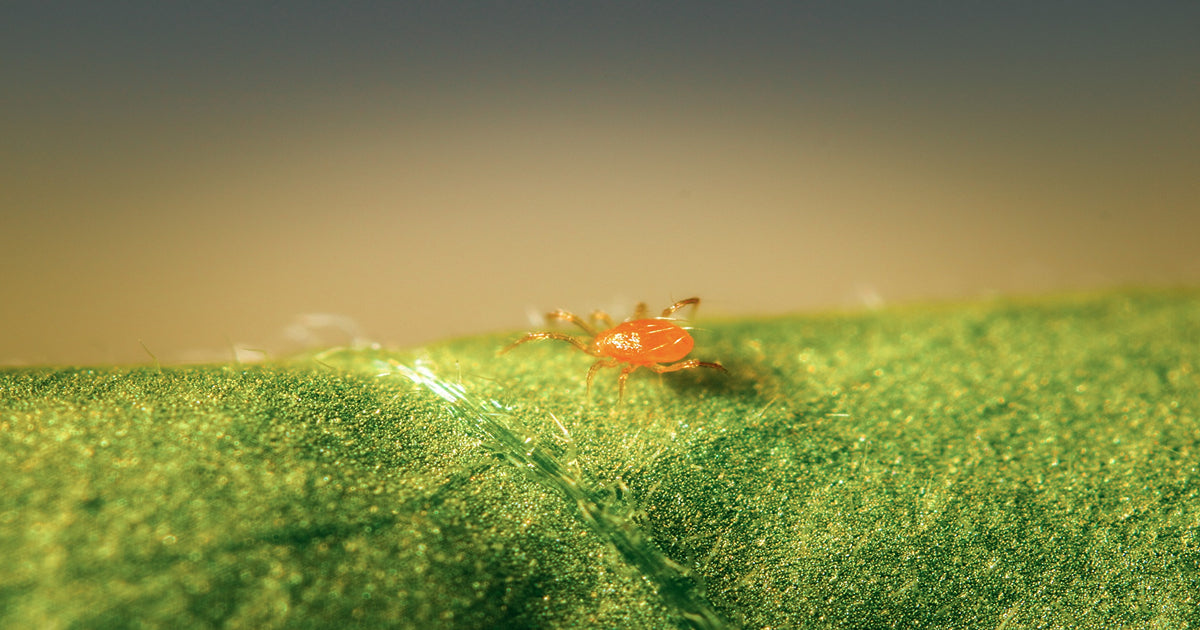
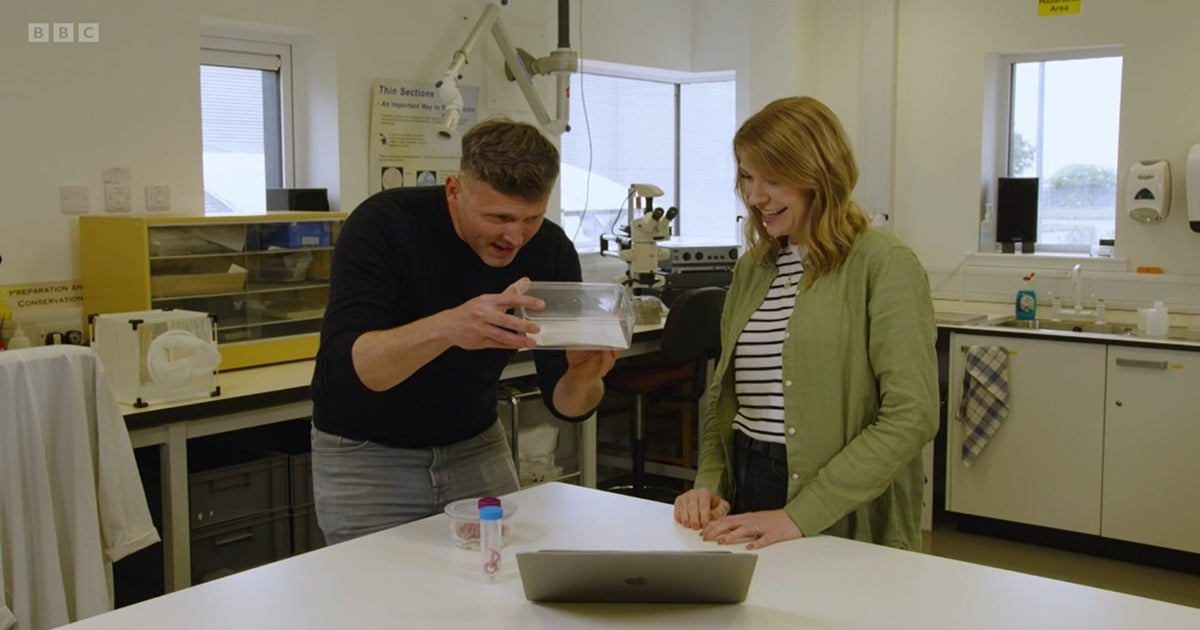
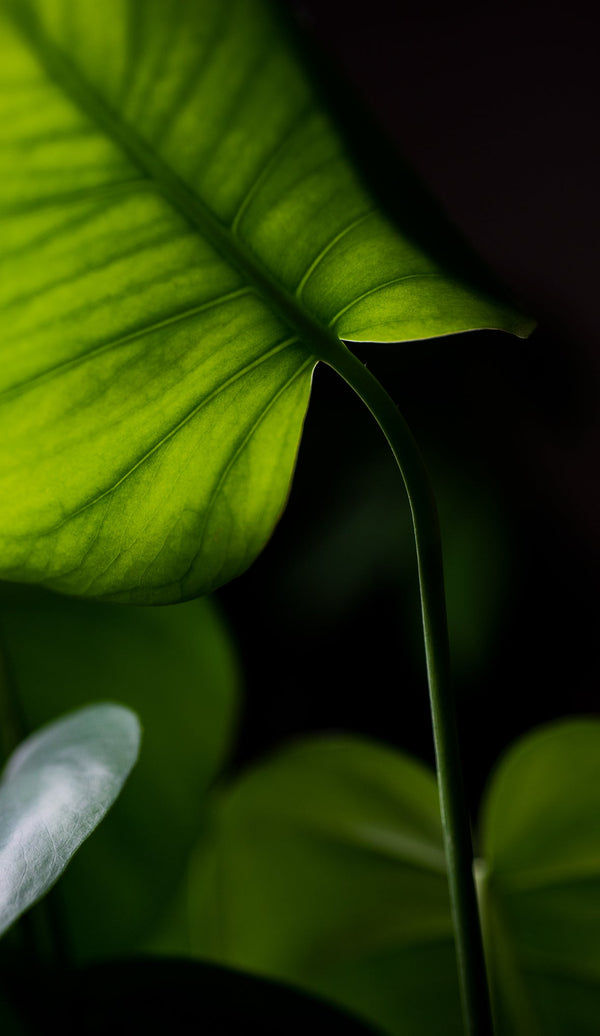

27 September, 2023
opio moses
thanks for the lession